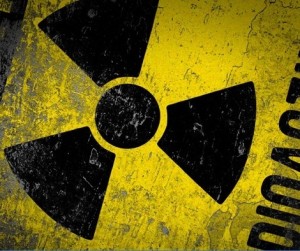QBy Tsuyoshi Inajima - Oct 27, 2011 11:20 AM GMT+0300
 The wrecked Fukushima nuclear plant in Japan may have released more than twice the amount of radiation estimated by the Japanese government, a study by European and U.S.-based scientists said.
The wrecked Fukushima nuclear plant in Japan may have released more than twice the amount of radiation estimated by the Japanese government, a study by European and U.S.-based scientists said.Tokyo Electric Power Co.’s Fukushima station, which was wrecked in the March 11 earthquake and tsunami, may have emitted 35,800 terabecquerels of radioactive cesium 137 at the height of the disaster, according to a study in the Atmospheric Chemistry and Physics journal. Japan’s nuclear regulator in June said 15,000 terabecquerels of cesium 137 was discharged.
The amount is about 42 percent of that released at Chernobyl in 1986, the worst civil atomic disaster in history, according to the study. The plant north of Tokyo may have also started releasing radioactive elements before the tsunami arrived about 45 minutes after the magnitude-9 quake struck, contradicting government assessments.
“This early onset of emissions is interesting and may indicate some structural damage to the reactor units during the earthquake,” according to the report.
Japan’s Nuclear and Industrial Safety Agency remains convinced the quake didn’t cause significant damage to the plant, Tadashige Koitabashi, a NISA spokesman, said by phone. He declined to comment on the report.
NISA and Tepco blame the tsunami, which swamped backup generators, causing a loss of cooling and the meltdowns of the three reactors operating at the time of the disaster. Explosions at the plant sent radiation into the atmosphere.
Radiation Effects
Cesium 137 is a source of concern for public health because the radioactive isotope has a half-life of 30 years.
A becquerel represents one radioactive decay per second and involves the release of atomic energy, which can damage human cells and DNA. Prolonged exposure to radiation can cause leukemia and other forms of cancer, according to the World Nuclear Association. A terabecquerel is one million times one million becquerels.
Almost a fifth of the cesium 137 fallout fell on Japan, while the remainder was carried by prevailing winds over the Pacific Ocean, according to the study.
Areas around the Fukushima Dai-Ichi plant, which is still emitting radioactive materials, may be uninhabitable for at least two decades, according to a government estimate in August.
Radiation Release
The study led by Andreas Stohl, an atmospheric scientist at the Norwegian Institute for Air Research, was released on the website of Atmospheric Chemistry and Physics Discussions. The authors used readings from stations around the world to assess the amount of radiation release.
Japanese government officials and the utility known as Tepco haven’t updated figures on radiation from the Fukushima Dai-Ichi station. Tepco said last week the amount of radiation being released has fallen to about 8 million times less than at the height of the disaster.
“We don’t need to add much to what was emitted in the early days,” Yasuo Kosaku, an official in NISA’s nuclear emergency division, said by phone today. Still, “the June estimate may have to be revised.”
The government plans to update the estimate, Goshi Hosono, the minister in charge of responding to the disaster, said in August.
The scientists provided other analysis that questions official assessments.
Reactor 4
The levels of cesium 137 emissions “suddenly dropped” after Tepco started spraying water on the spent fuel pool of the No. 4 reactor, they said. Reactor 4 was idle before the quake and the fuel assemblies in the core had been placed in the spent fuel pool of the unit.
“This indicates that emissions were not only coming from the damaged reactor cores, but also from the spent fuel pool of unit 4,” the report said.
Fukushima also discharged 16.7 million terabecquerels of xenon 133, “ the largest radioactive noble gas release in history not associated with nuclear bomb testing,” the study said.
The government estimated in June 11 million terabecquerels of the radioactive particle was released from the plant.
Xenon 133 has a half life of 5.2 days and is relatively harmless, Tetsuo Ito, the head of Kinki University’s Atomic Energy Research Institute, said by phone.
Go to the Original Bloomberg Story at:
https://www.bloomberg.com/news/2011-10-27/fukushima-plant-may-have-emitted-double-radiation-than-estimated.html
To contact the reporter on this story: Tsuyoshi Inajima in Tokyo at tinajima@bloomberg.net
To contact the editors responsible for this story: Aaron Sheldrick at asheldrick@bloomberg.net; Amit Prakash at aprakash1@bloomberg.net
To contact the reporter on this story: Tsuyoshi Inajima in Tokyo at tinajima@bloomberg.net
To contact the editors responsible for this story: Aaron Sheldrick at asheldrick@bloomberg.net; Amit Prakash at aprakash1@bloomberg.net









No comments:
Post a Comment